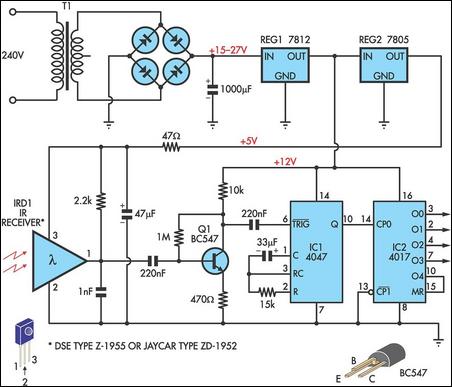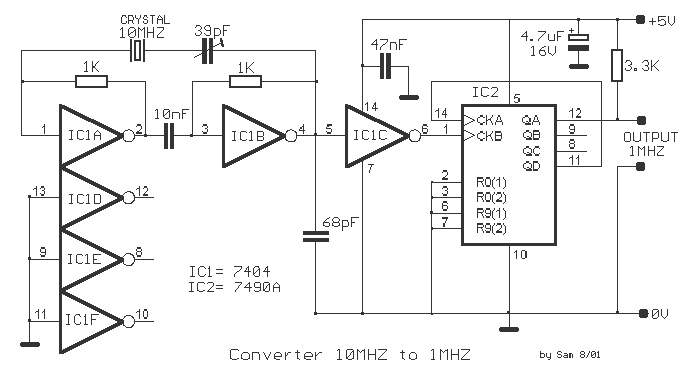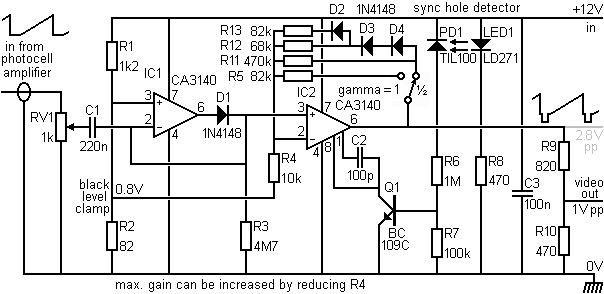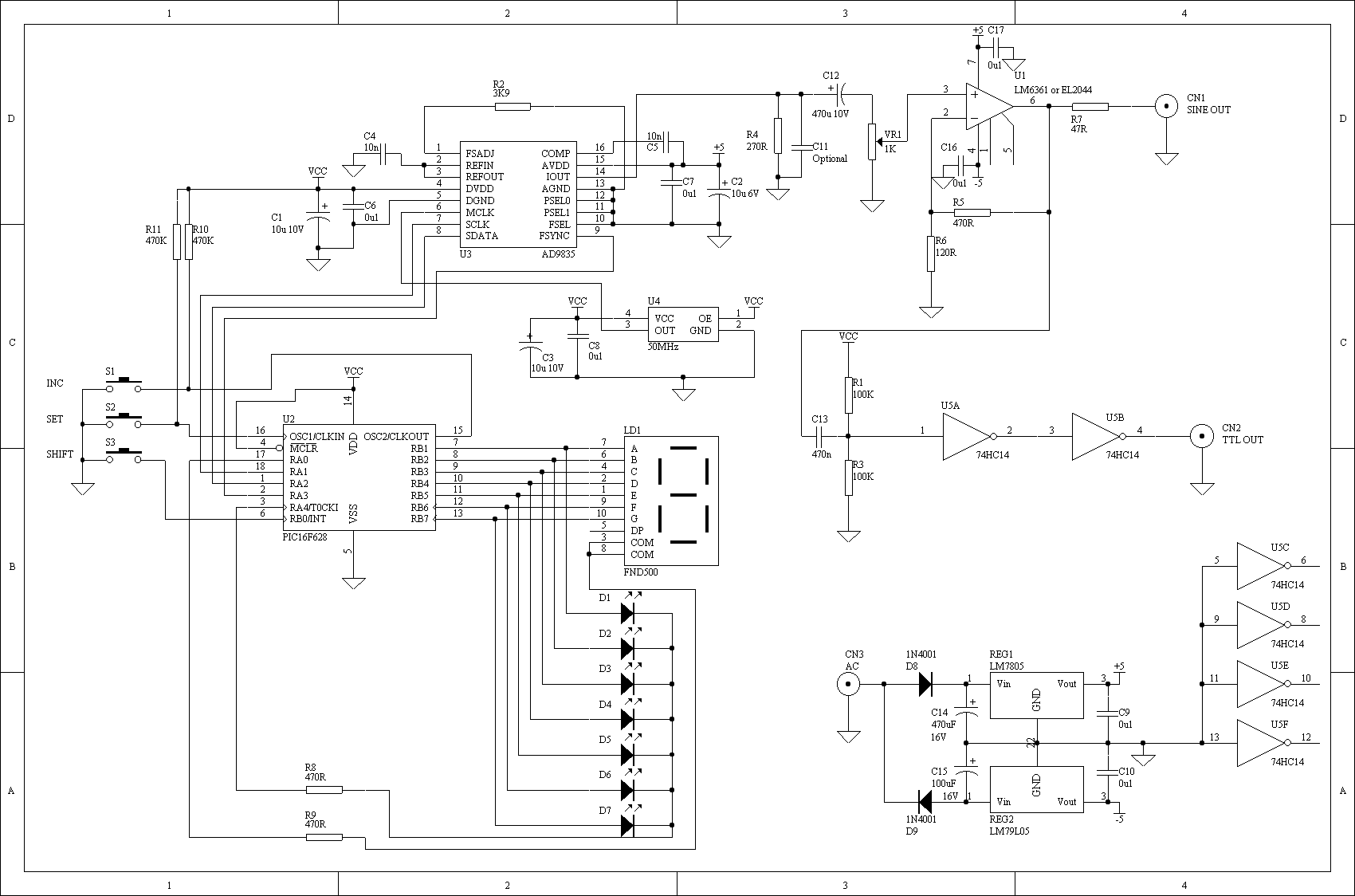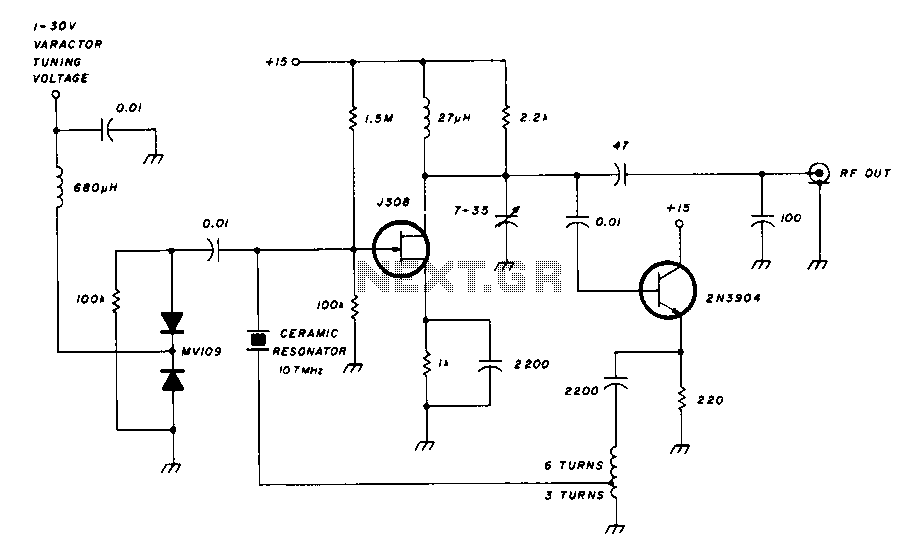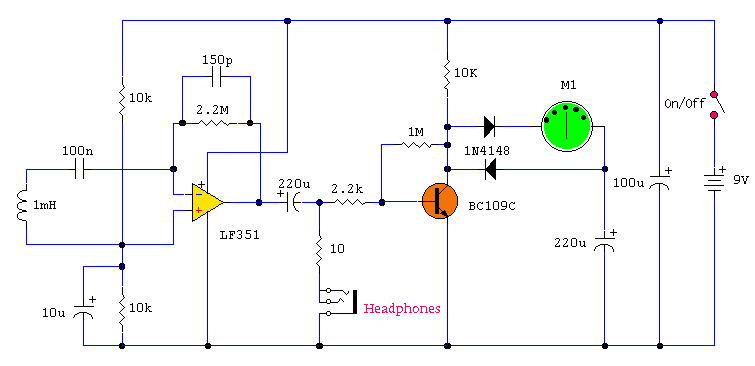
Adding 1 PPS and 10MHz Outputs to the Z3801A
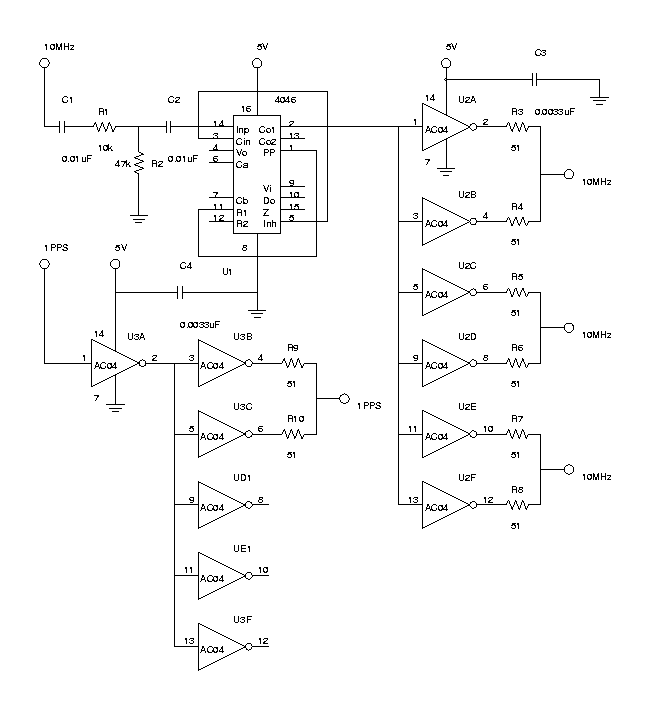
Enhance the functionality of the Z3801A GPS-disciplined oscillators by making 1 PPS and additional 10 MHz signals accessible from the rear panel. A 1 PPS signal is also provided on the DCD line of the serial connector to enable the unit to function as a reference clock for an NTP server. While there are plans to incorporate a distribution amplifier/splitter for the 10 MHz sine wave signal, the initial step involves adding several 10 MHz TTL square wave outputs. This document outlines the implementation process. A modification by Jeff Mock offers a reliable RS-232 level 1 PPS signal on the DCD line, which serves as the foundation for this project. Jeff extracts a 1 PPS TTL level signal from U5, pin 2 (a Lucent 1141LL). This signal is utilized to drive the 1 PPS circuit. Attempts to locate a 10 MHz TTL level square wave on the board were unsuccessful; however, TP5 in the front section of the main board provides a 10 MHz sine wave, albeit with a DC bias voltage. An RG-174 cable is employed to transport the signal from TP5 to the circuit. The front pin of the adjacent TP4 complex is grounded, allowing the RG-174 shield to be connected there. The 1 PPS circuit is straightforward, utilizing a 74AC04 hex inverter. The first section of the inverter provides an initial inversion to maintain a positive-going pulse. The output comprises two inverters connected in parallel through 51-ohm resistors, yielding a low-impedance signal capable of driving a reasonable length of coaxial cable. Unused sections of the 74AC04 must be tied to prevent oscillation or excessive current draw; these inputs are connected to the output of the first inverter, allowing for additional 1 PPS signals if required. To convert the 10 MHz sine wave into TTL square wave outputs, a method from Brooks Shera's GPS-disciplined oscillator controller is adapted. The input circuit of a 74HCT4046 PLL chip is used as an input conditioner. Due to the unavailability of the HCT version, a 74AC4046 is employed instead, offering faster operation and lower jitter. An additional capacitor is included at the input to prevent loading down the DC voltage on TP5. The circuit is constructed on a perf-board with four SMA connectors mounted on the rear panel for the new outputs. The board is supported by short wires leading to the SMA connectors, which is feasible for this application despite potential risks during handling. The board operates at a low power consumption of a few milliamps at 5 volts, with power sourced from the +5V test point on the power supply board. Ground connection is established via a solder lug attached to one of the SMA chassis connectors.
The Z3801A GPS-disciplined oscillator modification enhances its utility by providing both 1 PPS and 10 MHz outputs, facilitating its role as a reference clock for NTP servers. The design leverages existing signals within the oscillator, utilizing a combination of inverters and a phase-locked loop (PLL) to ensure reliable signal integrity. The choice of components, such as the 74AC04 inverter and 74AC4046 PLL, reflects a focus on speed and low jitter, critical for maintaining timing accuracy. The physical layout, with SMA connectors, allows for straightforward integration into existing systems while ensuring minimal signal degradation. The grounding strategy and power sourcing demonstrate practical considerations for circuit stability and reliability. This modification not only broadens the application scope of the Z3801A oscillator but also exemplifies effective circuit design principles in enhancing electronic systems.Make Z3801A GPS-disciplined oscillators more useful by making 1 PPS and additional 10MHz signals available on the rear panel, and providing a 1 PPS signal on the DCD line of the serial connector so the unit could serve as a reference clock for an NTP server. Although I ultimately want to add a distribution amplifier/splitter for the 10MHz sine wave signal, I thought it would be easier to initially add several
10MHz TTL square wave outputs. This page describes how I did that. Jeff Mock has published a modification that provides a nice RS-232 level 1 PPS signal on the DCD line, so I used that as the starting point. (Note: I`ve learned that Jeff`s web page is no longer there. A mirror is at. ) Jeff taps a 1 PPS TTL level signal off of U5, pin 2 (a Lucent 1141LL, whatever that is). I used that signal to drive my 1 PPS circuit. After probing around on the board, I was unable to discover a 10MHz TTL level square wave anywhere. However, TP5 in the front portion of the main board has a nice 10MHZ sine wave available, which unfortunately is riding on top of a DC bias voltage.
I used a piece of RG-174 cable to bring the signal from TP5 back to my circuit. The front pin of the adjacent TP4 complex is at ground, so I connected the RG-174 shield there. The 1 PPS circuit is very simple. I used a 74AC04 hex inverter, with the first section providing an initial inversion so that the end result remains a positive-going pulse. The output is a pair of inverters parallelled together through 51 ohm resistors; this combination provides a nice low-impedance signal that can drive a reasonable length of coax.
The unused sections of the 74AC04 must be tied to something; if they float, the chip may oscillate or otherwise find itself in a state of high current draw. I tied the unused inputs to the output of the first inverter, so they are available as additional 1 PPS signals if needed.
Since the 10MHz signal is a sine wave and I want to generate TTL square wave outputs, I struggled a bit with the best way to couple the signal into the digital circuitry. Finally, I settled on an idea used by Brooks Shera in his GPS-disciplined oscillator controller. Brooks used the input circuit of a 74HCT4046 PLL chip as an input conditioner. I wasn`t able to find the HCT version (and it`s not recommended for new designs, anyway), so I used a 74AC4046 instead.
The AC series part is faster and has lower jitter, so hopefully it will work at least as well in this application as the HCT version. My circuit has an added capacitor at the input that Brooks didn`t use; this keeps the input circuit from loading down the DC voltage on TP5.
I built the board on a piece of perf-board and mounted four SMA connectors on the rear panel for the new outputs. The board is supported by the short wires leading to the SMA connectors; this wouldn`t be wise if the unit were being banged around, but it should suffice for my application.
The board draws only a few milliamps at 5 volts, and I tapped power for it from the +5V test point on the power supply board. Ground is via a solder lug attached to one of the SMA chassis connectors. 🔗 External reference
The Z3801A GPS-disciplined oscillator modification enhances its utility by providing both 1 PPS and 10 MHz outputs, facilitating its role as a reference clock for NTP servers. The design leverages existing signals within the oscillator, utilizing a combination of inverters and a phase-locked loop (PLL) to ensure reliable signal integrity. The choice of components, such as the 74AC04 inverter and 74AC4046 PLL, reflects a focus on speed and low jitter, critical for maintaining timing accuracy. The physical layout, with SMA connectors, allows for straightforward integration into existing systems while ensuring minimal signal degradation. The grounding strategy and power sourcing demonstrate practical considerations for circuit stability and reliability. This modification not only broadens the application scope of the Z3801A oscillator but also exemplifies effective circuit design principles in enhancing electronic systems.Make Z3801A GPS-disciplined oscillators more useful by making 1 PPS and additional 10MHz signals available on the rear panel, and providing a 1 PPS signal on the DCD line of the serial connector so the unit could serve as a reference clock for an NTP server. Although I ultimately want to add a distribution amplifier/splitter for the 10MHz sine wave signal, I thought it would be easier to initially add several
10MHz TTL square wave outputs. This page describes how I did that. Jeff Mock has published a modification that provides a nice RS-232 level 1 PPS signal on the DCD line, so I used that as the starting point. (Note: I`ve learned that Jeff`s web page is no longer there. A mirror is at. ) Jeff taps a 1 PPS TTL level signal off of U5, pin 2 (a Lucent 1141LL, whatever that is). I used that signal to drive my 1 PPS circuit. After probing around on the board, I was unable to discover a 10MHz TTL level square wave anywhere. However, TP5 in the front portion of the main board has a nice 10MHZ sine wave available, which unfortunately is riding on top of a DC bias voltage.
I used a piece of RG-174 cable to bring the signal from TP5 back to my circuit. The front pin of the adjacent TP4 complex is at ground, so I connected the RG-174 shield there. The 1 PPS circuit is very simple. I used a 74AC04 hex inverter, with the first section providing an initial inversion so that the end result remains a positive-going pulse. The output is a pair of inverters parallelled together through 51 ohm resistors; this combination provides a nice low-impedance signal that can drive a reasonable length of coax.
The unused sections of the 74AC04 must be tied to something; if they float, the chip may oscillate or otherwise find itself in a state of high current draw. I tied the unused inputs to the output of the first inverter, so they are available as additional 1 PPS signals if needed.
Since the 10MHz signal is a sine wave and I want to generate TTL square wave outputs, I struggled a bit with the best way to couple the signal into the digital circuitry. Finally, I settled on an idea used by Brooks Shera in his GPS-disciplined oscillator controller. Brooks used the input circuit of a 74HCT4046 PLL chip as an input conditioner. I wasn`t able to find the HCT version (and it`s not recommended for new designs, anyway), so I used a 74AC4046 instead.
The AC series part is faster and has lower jitter, so hopefully it will work at least as well in this application as the HCT version. My circuit has an added capacitor at the input that Brooks didn`t use; this keeps the input circuit from loading down the DC voltage on TP5.
I built the board on a piece of perf-board and mounted four SMA connectors on the rear panel for the new outputs. The board is supported by the short wires leading to the SMA connectors; this wouldn`t be wise if the unit were being banged around, but it should suffice for my application.
The board draws only a few milliamps at 5 volts, and I tapped power for it from the +5V test point on the power supply board. Ground is via a solder lug attached to one of the SMA chassis connectors. 🔗 External reference
Warning: include(partials/cookie-banner.php): Failed to open stream: Permission denied in /var/www/html/nextgr/view-circuit.php on line 713
Warning: include(): Failed opening 'partials/cookie-banner.php' for inclusion (include_path='.:/usr/share/php') in /var/www/html/nextgr/view-circuit.php on line 713
